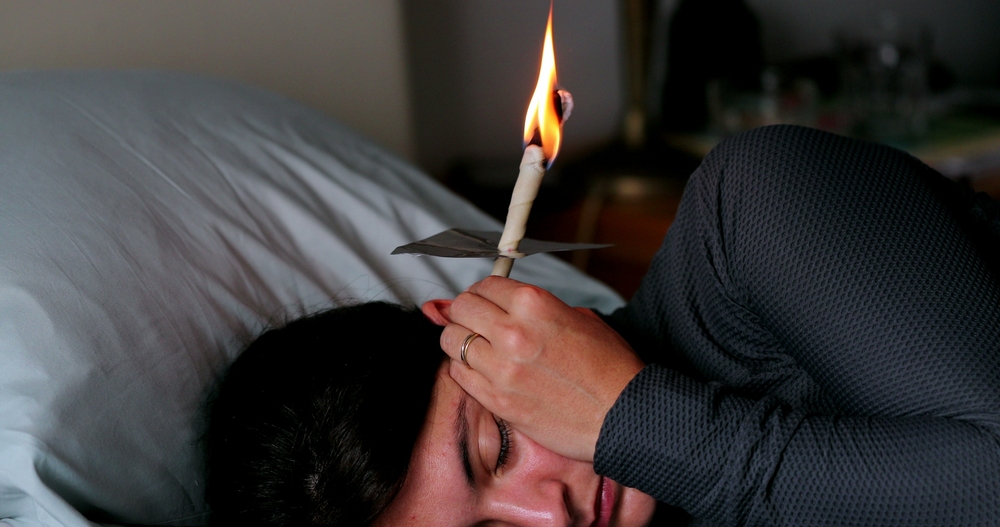If you were to witness your partner inserting a candle into their ear, you might begin to raise some eyebrows. The sight of candles protruding from ears, whether self-administered or by someone else, isn’t exactly a flattering image. However, in certain circles, there persists a belief that a method known as “ear candling” is an effective way to reduce earwax.
Does earwax canding work?
Spoiler alert: Absolutely not.
So, why does this morsel of pseudo-science persist in infiltrating the minds of otherwise sensible individuals? Pinning down a precise answer is challenging. However, the more insight you gain into earwax candling, along with the associated risks, the better equipped you are to make an informed decision—even if the rational choice seems abundantly clear.
What is earwax candling?
This is the alleged process of how earwax candling works: By inserting a candle into your ear with the wick side facing outward, you supposedly create a pressure differential. This differential is believed to pull the earwax outward, freeing it into the open. Theoretically, this pressure difference is expected to dislodge any earwax causing a blockage. However, it’s crucial to note that this risky practice is not a safe or effective method for ear cleaning.
Why ear candling doesn’t work
Several issues undermine the efficacy of this practice, primarily due to the impracticality of the physics involved. It’s implausible for a candle to generate the required pressure differential to move earwax significantly. Moreover, achieving such a pressure difference necessitates a seal, which is absent during candling.
The candles utilized in these “procedures” are purportedly special, with the promise that after the fifteen-minute session, breaking apart the candle will reveal bacteria, debris, and wax from the ear. However, this claim is debunked as the same residue appears in both burned and unburned candles, rendering the supposed proof baseless.
Scientific investigations have failed to substantiate any benefits associated with earwax candling.
Is earwax candling safe?
Why not give it a try, you might think? Well, the moment hot candle wax comes into contact with your ears, trouble can ensue. While it’s true that some people may experiment with ear candling without apparent harm, it doesn’t negate the associated risks—ear candling is far from being a safe practice.
Potential adverse effects of ear candling include:
- Severe Burns to the Inner Ear: Melted earwax entering the ear can lead to serious hearing problems and burns. In extreme cases, this could result in permanent hearing impairment.
- Candle Wax Clogging the Ear Canal: Once the wax cools, it may clog the ear canal, causing temporary hearing loss or, in severe instances, necessitating surgical intervention.
- Fire Hazards: Anytime an open flame is involved, there’s a risk of causing significant damage and putting your life in jeopardy. In extreme cases, you could even pose a threat to your home by causing a fire.
The potential dangers of ear candling far outweigh the minimal benefits of removing earwax.
You don’t need a candle to keep your ears clean
For most individuals, concerns about cleaning earwax are minimal, as the ears are adept at self-cleaning. However, some may experience unusually heavy earwax production or buildup.
If you find yourself needing to address excessive wax, there are scientifically proven and safe methods available. Options include using a fluid wash or seeking professional assistance, where specialized tools can be employed to remove excess wax or blockages safely.
Avoid the use of cotton swabs, and steer clear of attempting to clean earwax with an open flame. Earwax candling is ineffective and poses risks that can significantly compromise your comfort and hearing. It is time to retire those special candles.
Find a hearing specialist near you if you have any concerns on managing earwax buildup or if you are experiencing hearing loss.


